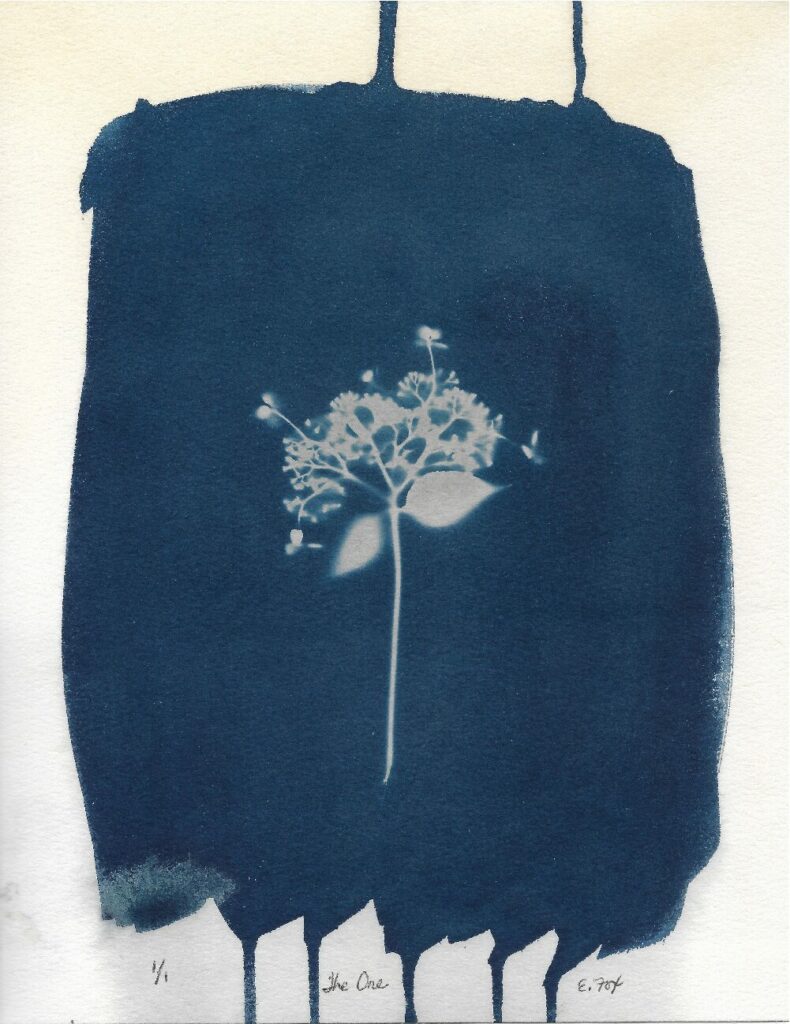What is a cyanotype?
The cyanotype is a photographic printing process that uses the chemicals ferric ammonium citrate or ferric ammonium oxalate as well as potassium ferricyanide and water to develop and fix an image to a page. The chemicals are sensitive to UVA radiation, and when exposed to sunlight, reveal a monochrome, cyan-blue color wherever the light touches. Sir John Herschel discovered the process in 1842, and botanist Anna Atkins used the process from 1843 to 1861 to print books of botanical and textile specimens, creating the world’s first photographically-illustrated books. The technique is still in use today.
How do you make a cyanotype?
First, dissolve ferric ammonium citrate or ferric ammonium oxalate as well as potassium ferricyanide in water. When they are fully dissolved, mix equal parts of them together in dim light.
Second, using a foam brush, coat a piece of watercolor paper with the chemical mixture, out of reach of the sunlight. Let the paper dry in the dark, and leave it in the dark until you are ready to use it.
Next, place a negative or other object onto the paper, putting a piece of glass over it to ensure the image turns out sharp. Expose the paper to the sunlight. The length of time it needs to be exposed will vary, based on how sunny it is. On a sunny day, you may need to expose the print for 10 to 15 minutes, and on a day with less sun, it will need to be exposed for longer. You’ll know it’s ready to go when the blue that appears on the paper begins to turn bronze.
Finally, take the glass and the object off of the paper and rinse the paper in water for approximately two minutes, or until the water starts running clear, to fix the image to the page. Let the paper dry, and then place it between heavy books to flatten it out.
Show us what you make
We want to see your creations; be sure to tag us at @my_flourish if you try this process for yourself!

